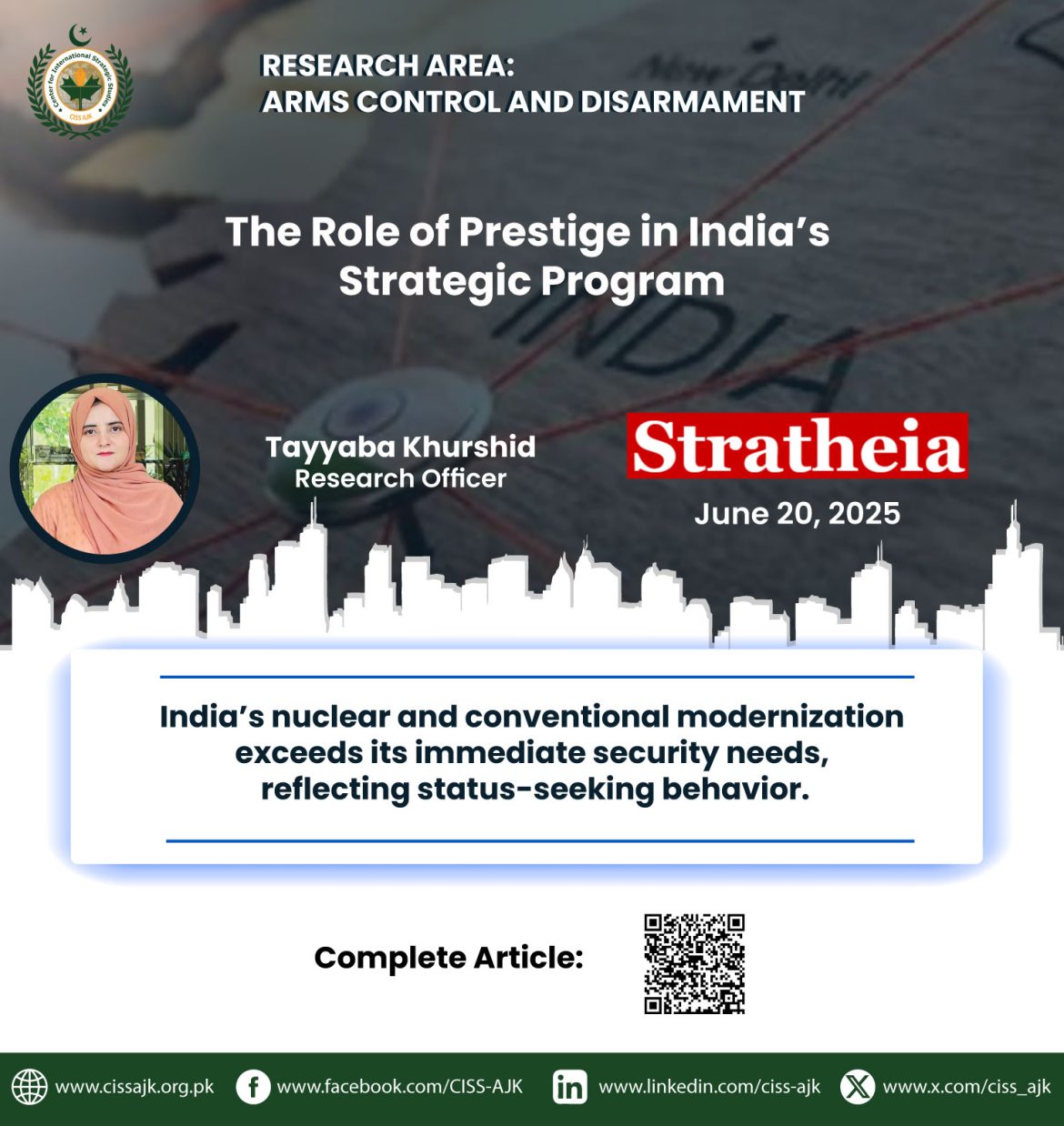The program encompasses the development and modernization of nuclear weapons, as well as the exploration of space, testing of long-range missiles, and the achievement of advanced maritime capabilities. The path of modernization indicates that it is far beyond India’s immediate security needs. This highlights a disturbing trend of an aggressive posture driven by the ambition to assert itself as a regional power-seeking global influence, thereby undermining strategic stability in South Asia, where peace remains elusive.
India’s strategic path is inspired by hegemonic ambitions rather than solely defensive considerations.
India’s strategic path is inspired by hegemonic ambitions rather than solely defensive considerations. India was the first country to introduce Nuclear weapons to South Asian strategic calculus. The 1974 Smiling Buddha nuclear test and the 1998 Operation Shakti test were destabilizing actions aimed at establishing dominance in South Asia. To preserve the strategic balance and guarantee its national security and territorial integrity, Pakistan was compelled and had no choice but to test its weapons in the face of the Indian nuclear threat and the 1971 episode and acquire a credible deterrent.
State action is influenced by prestige, which is subtle yet important, especially for states seeking greater international recognition. In India’s case, its strategic agenda has aligned more with what academics call “status-seeking behavior,” actions aimed at changing global perceptions of power and potential. Status theorist explain this behavior as according to Ward status is a most prominent and underappreciated resource that motivates states behavior and drive their actions. The various state actions like going to war, arms acquisition, more advanced weapon systems and technologies and building sophisticated nuclear weapons got attention of status research for last two decades.
Nonetheless, the rapid modernization and wide spectrum of India’s strategic evolution, especially around 2000, suggest incentives beyond conventional deterrence reasoning. The development of intercontinental ballistic missiles, the increase in cooperation with spacefaring countries, and the expansion of naval presence in the Indo-Pacific indicate the goal of strategic parity with established powers like the US, China, and Russia.
A strategic shift from regional deterrence to global reach is shown by India’s development of long-range missiles, especially the Agni-V, which has a range of over 5,000 km, and the Agni-VI, which is still in development and is anticipated to reach beyond 10,000 km, acknowledged by former DRDO chief Avinash Chander. India could attack targets in Europe, Oceania, Africa, Asia, Alaska, and Northern Canada with these capabilities, putting it in the rare group of countries with the ability to launch intercontinental strikes. This development portrays India’s intention to develop technologies beyond security needs and with advanced military and technological capabilities, reflecting both strategic considerations about China and a desire for worldwide status.
The development of long-range missiles like Agni-V and Agni-VI signals a shift toward global reach.
India seeks legitimacy beyond South Asia and has been criticized by neighboring countries for its aggressive foreign policy rhetoric and interference in their domestic affairs, as seen in India’s policies in the Maldives, Bangladesh, and Sri Lanka. Outside the region, it participates in multilateral forums such as QUAD and BRICS and strives for a permanent seat on the UNSC to increase its influence. Although it has violated all the UNSC resolutions on Kashmir, which call for a fair and free plebiscite, and has unilaterally changed the status of Kashmir.
India’s anti-satellite ASAT test in 2019, conducted under Mission Shakti, is a prominent example of prestige signaling. There was no direct satellite-based threat, and the ASAT test positioned India as one of the few nations that can exhibit kinetic space deterrence after the US, Russia, and China. This shows India’s desire to be among the global Great Powers rather than what its immediate security needs demand.
Narender Modi, PM of India, called the test a “historic feat,” making India an established space power. The prestige-driven modernization is also seen in India’s maritime strategy, investing in aircraft carriers, nuclear submarines, and blue water naval capabilities. India aims to establish itself as a powerful maritime actor. Its modernization and interaction with extra-regional countries highlight this mindset, where it has moved far beyond the conventional realm of National Security. Its goal is to act on behalf of the US as a net-security provider in the Asia Pacific Region.
India’s ASAT test in 2019 exemplifies prestige signaling beyond immediate security needs.
Domestic political factors shape India’s strategic ambitions. The public supports ICBM development, space missions, and defense upgrades as a source of national pride. The Narendra Modi government leverages these strategic initiatives for domestic political gain by highlighting missile tests, space launches, and surgical strikes to demonstrate India’s status and prestige as a rising global power entering the Major Powers Group.
India’s prestige-driven program, along with its modernization efforts on conventional fronts, significantly impacts regional stability and crisis management. The pursuit of prestige should be balanced with strategic foresight, diplomatic maturity, and security considerations. India has long struggled to establish itself as a responsible global player to achieve international credibility.
Disclaimer: The opinions expressed in this article are solely those of the author. They do not represent the views, beliefs, or policies of the Stratheia.



